As a result of media pressure to pay “any price” in exchange for a single abducted Israeli, as well as the release of 1,027 convicted murderers and terrorists from prison in the Schalit Deal, terrorist organizations have boosted their efforts to abduct Israeli soldiers and civilians.
This page lists some of the terrorist organizations’ attempted and planned abductions beginning after the abduction of Gilad Schalit, Ehud Goldwasser, and Eldad Regev in 2006.
Critically, not all abduction attempts are covered by the media. For instance, in a September 2008 interview (Hebrew), Ron Daniel noted that security forces had recently foiled five abduction attempts by Hizballah alone. The media reported no details about these attempted abductions.
By the same token, when Ehud Olmert released 230 Fatah prisoners in a December 2008 gesture to the PA, Almagor activists just happened to discover in the legal file of one of these terrorists that he had tried to tempt an Israeli drug dealer into a drug deal in order to abduct him and use him as a bargaining chip. This would have been a repeat of the Elchanan Tenenbaum story.
♦
On 4 June 2013, two women serving in the IDF were walking near IDF Camp 80 when a white car slowed to a crawl on the road next to them and its occupants tried to talk them into entering the vehicle, according to the soldiers’ statement. When nothing came of this, one of the passengers got out, grabbed one of the soldiers, and attempted to force her into the car.
The soldiers escaped, and the car sped off.

In May 2013, the ISA, IDF, and Israel Police captured Hamas terrorist Bakhar Atallah Sami’ah Sa’ad (26) of Mazra’a al-Sharqiya. He had been planning abduction and shooting attacks.
The terrorist confessed during his interrogation that while in Jordan in April, he had met with Ibrahim Hajaz, a Hamas terrorist who had been sentenced to ten life terms in prison for his involvement in a terrorist cell that killed ten Israelis—but was then released as part of the Schalit Deal and expelled from the country. It was Hajaz who recruited Sa’ad and provided him with instructions for staging attacks.
Hajaz told Sa’ad, inter alia, to recruit additional terrorists and to go to Sudan for military training, but Sa’ad was arrested before he could do so.
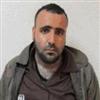
Islamic Jihad terrorists Ma’taz Mahmad Taleb Abido, Bashir A’id Mahmad Zahada, Hazam Awani Mahmad Tawil, and Abdallah Mahmad Ata Abido, all residents of Hevron, planned to commit an abduction attack in the Hevron area.
The terrorists planned to drive to a transit hub, shoot from their vehicle at Israelis waiting there, and then abduct one of them, murder him, hide the body, and negotiate over its release.
Tawil and Abdallah Abido committed security offenses in the past as Islamic Jihad members and were jailed. The members of the cell were recruited by Ma’taz Abido, a senior Islamic Jihad terrorist.
Indictments against the terrorists were handed down in April 2013.

In March 2013, the ISA, IDF, and Israel Police broke up a Hevron-area Hamas cell. The terrorists intended to abduct an Israeli, murder him, hide his corpse in a cave, and then engage in negotiations over the return of the body. The terrorists also were found to be in possession of an IED, which they planned to use in a separate terrorist attack.
The cell was headed by Amad Nadal Mazen Balut (19) and also included Ruhi abu Shamasiyeh and seven other terrorists.

Imad Sha’ar, Jalal Qutb, and Amjad Razem, all residents of Jerusalem, planned to offer a ride to a Jew, abduct him, and murder him so as to acquire his weapon. In March 2013 the terrorists gave a ride to a Jew who had been waiting at a bus stop near Hizmeh Junction, but they found that he was not carrying a weapon and did not attack him.
The terrorists also were members of a cell that plotted to attack Jewish visitors to the Temple Mount as well as police forces stationed in eastern Jerusalem. The other members of the cell were Nur Hamdan, ‘Umar Wazwaz, Tariq Ibrahim, and Fares Dejani.
The terrorists were in contact with Hamas; Fatah’s al Aqsa Martyrs Brigades; and other terrorists in Judea, Samaria, and Gaza, with the purpose of receiving aid for the commission of the attack.

PFLP terrorist Walid Habas Musa prepared plans to abduct an Israeli as a bargaining chip for freeing terrorists, as well as to explode an IED near a Jerusalem hotel, and recruited other terrorists to help him commit the planned attacks.
On 14 March 2013, Musa was sentenced by a military court to just five years in prison, due to a plea bargain.

On 31 January 2012, it was announced that over the course of the preceding months, the ISA and IDF had discovered and dismantled a major Hamas cell in the Hevron area. About twenty terrorists were arrested in all, including Nabil Taleb Muhammad Awada (ca. 32), Mahmoud Mahmad Mahmoud abu Warada (ca. 34), and Tarek Aziz Issa Graib (ca. 35). All of the terrorists were already known to Israeli security agencies from previous terrorist activity.
The cell planned various terrorist attacks, with special emphasis on an abduction with the goal of bargaining for released terrorists. The terrorists already had begun planning of such an abduction, and were considering finding a place to hide their captive as well as to enlist an Israeli citizen to serve as a driver during the attack. The terrorists also had acquired a great quantity of munitions.
The cell received funding and directions from Hamas terrorists abroad with which it was in contact, especially Husam Badran, who had been released from prison in the Schalit Deal in October 2011 and expelled to Qatar.
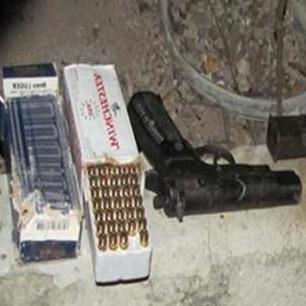
Hamas terrorists Ahmad abu Fahida, an attorney from Ras Karkar (in the Binyamin region) and Ahmad Shabroui, of Silwad, assembled a terrorist cell at the beginning of 2013 with the aim of abducting and murdering an IDF soldier as well as producing rockets. Abu Fahida, the head of the cell, was recruited by Gaza-based Hamas terrorist Ahmad Oudeh.
Both Abu Fahida and Shabroui had been previously arrested for terrorist activity. They were again arrested at the end of January 2013, after reporting to their Hamas handlers in Gaza that they would be ready for an attack in a few days.

On 15 January 2013, IDF forces on operational duty near Gaza discovered an exit from a tunnel that had been dug from there. The exit was 150 meters from the security fence and about two kilometers from Nir Oz.
The tunnel was of the same type as that used in 2006 for the ambush on IDF forces that resulted in the murder of Lieutenant Hanan Barak and Staff-Sergeant Pavel Slutzker and the abduction of Corporal Gilad Schalit.
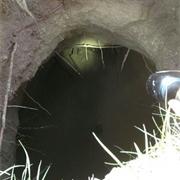
Part of a terrorist cell consisting of Israeli citizens and Palestinians was arrested by the ISA and the counter-terrorism unit of the police at Eyal Checkpoint (by Kfar Saba) during the night between December 2012 and January 2013. The terrorists had tried to abduct an Israeli solider or civilian returning from New Year’s Eve celebrations, following two days of attempts, all of which had been frustrated by hitchhikers’ suspicions, and they inteded to continue to try. Their car contained ropes, gloves, balaclavas, a utility knife, and a dummy pistol. The terrorists’ intent was to use their victim as a bargaining chip.
The central terrorists arrested were Sayd Manjad Dib Jasser (19) of Jenin, Taufik Hader Taufic Ajbarieh (18) of Jenin, Yussef Hasan Yussef Warda (34) of Qalansawe, and Anes Jabareen (18) of Umm al-Fahm.
The cell received guidance from two Islamic Jihad terrorists, one from Jenin who had been imprisoned in the past, and one from Samaria who directed them from prison.
The ISA said: “This development again illustrates the intent of the terrorist organizations to continue performing abduction attacks with the goal of causing the release of prisoners, all while imprisoned terrorists play a prominent role in directing terrorist activity.”
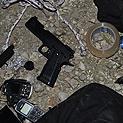
Israeli security forces are aware of a total of 27 attempted abductions that occurred in 2012.

In September 2012, Israeli security forces apprehended PFLP terrorists Ashraf abu ‘Aram and Muhammad Zeitoun (both 26) of Ramallah for conspiracy to abduct an IDF soldier.
The two planned to keep the soldier in a hiding place in Kafr ‘Aqb in Jerusalem and to use him as a bargaining chip for the release of PFLP leader Ahmed Sa’adat. Abu ‘Aram had made contact with an arms dealer to acquire two pistols and an automatic weapon for the abduction.
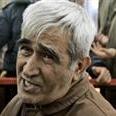
On 30 May 2012, ISA head Yoram Cohen appeared before the Knesset Foreign Affairs and Defense Committee and delivered a briefing on trends in terrorist activity over the past year and the current status of the various terrorist organizations:
“We stopped 28 groups aiming to commit abduction attacks, at least 18 of which were by Hamas. Recently we succeeded in stopping a cell from committing such an attack at the very last minute.”

In May 2012, Israeli forces captured the members of a terrorist cell headed by PFLP terrorist Rajeb Mousa Salah Salah al-Din (52). The terrorists, from Hizma (in northern Jerusalem), were charged with three abduction attempts. They had tried to beat soldiers and force them into their vehicle, then imprison them and sell them to relatives of terrorists imprisoned in Israel. The soldiers were to be used as bargaining chips for freeing these terrorists, especially PFLP chief Ahmed Sa’adat and Tanzim head Marwan Barghouti.
In one attempt, in December 2011, the terrorists had looked for soldiers to abduct at Ma’aleh Adumim Junction, but found none. On 4 January they almost abducted an Israeli woman in the Ma’aleh Adumim area, but decided when they reached her that they preferred to abduct only soldiers. Afterward they drove to Ma’aleh Adumim Junction, but found no soldiers to abduct. They returned there on 6 January, but again found no soldiers.

When they were not included in the Schalit Deal, three jailed terrorists belonging to Fatah’s Aqsa Martyrs Brigades formulated a plan along with Ramzi Uda Tayam Arar, a relative of one of them, to abduct an Israeli soldier. Arar (32), a Tzurif resident who had been released from prison in the past, contacted a Saudi individual and arranged a trip to Saudi Arabia in order to receive assistance for purchasing munitions, but was arrested in the beginning of May 2012, before he could make the trip.
The imprisoned co-conspirators included Ibrahim Muhammad Sa’id Ghaneimat (28) of Tzurif and Hevron, who was serving a life sentence for the murder of Neta Blatt-Sorek near Beit Shemesh; Mahmad Baraka A’ish Amur (28) of Khan Yunis, who led the preparations for an abduction; and Mahmad Hassan Mahmad Amur (27), also of Khan Yunis, who was imprisoned at Nafha Prison. The cell was handled by the Holy Warriors Brigades, which had split off of the Aqsa Martyrs Brigades.
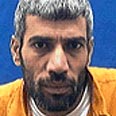
Four PFLP terrorists were apprehended in May 2012 for preparations to abduct a soldier, which they had begun in April. Three of them had been jailed for security-related crimes in the past.
The terrorists’ plan called for abducting a soldier during protests in behalf of terrorists imprisoned by Israel. They aimed to use the soldier as a bargaining chip to free PFLP Secretary-General Ahmed Sa’adat.
The terrorists also planned a shooting attack against soldiers at the Maccabim Checkpoint (near Modi’in) as well as at the Jeba’a Checkpoint (northwest of Jerusalem) in the event that one of the imprisoned terrorists then on a hunger strike would die.
The terrorist cell included Youssef Ahmed Mahmad Elian, a resident of Anata (north of Jerusalem) who had been imprisoned in the past and was working when apprehended as a security guard in the PA security forces, and whose weapons from that job were to serve the planned attacks; Salam Dirdisawi (40) of Ramallah, who had been imprisoned several times in the past for terrorist activities and possessed other weapons to be used in the attacks; and Ahmed Mahmad Diab Sheikh (20) of Anata, who had been imprisoned from October 2011 to January 2012 for popular terrorist activity and attacking an Israeli vehicle.
The ISA said:
This episode again illustrates the efforts of the terrorist organizations and the enhanced motivation of their operatives to execute an abduction attack for purposes of bargaining for the release of prisoners imprisoned in Israel.

Umar Abu Sanina, formerly a Fatah terrorist from Hevron who changed his allegiance to Hamas while in prison, was released in the Schalit Deal and expelled to the Gaza Strip. While there, in March or April 2012, he sent relatives instructions for recruiting terrorists for abductions in Samaria and Judea (the West Bank):
Try to acquire resources, weapons, and explosives. It is possible to obtain munitions from the enemy, although this requires initially using cold weapons. In the first stage it is necessary to focus on setting up a cell according to the instructions and equipping the members with whatever they require for their training in performing simple attacks.
Inform us of the attack only after it has been executed and only in code. Do not speak in the open and do not transmit details except when meeting face-to-face. We will be the ones to announce the attack, through the Supreme Military Council.

In April or May 2012, Israeli security forces apprehended the members of a Hamas cell in Hevron that was planning to abduct Israeli residents of Kiryat Arba. Ma’ataz Qawasmeh, the head of the cell, had been imprisoned previously for his activities as a Hamas member. Another cell member, Mahmoud Dwek, also had been imprisoned in the past.
The cell detonated IED’s by the fence of Kiryat Arba in order to assess the reaction of security forces. Following this preparation they intended to infiltrate the town and abduct an Israeli—or, barring that, to murder him.
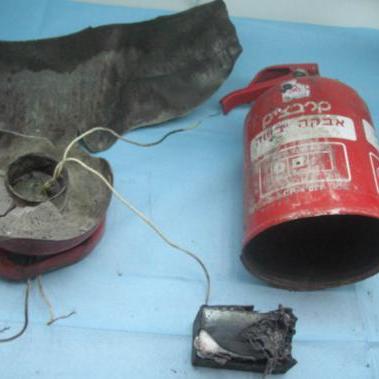
On an afternoon in March 2012, a PFLP cell led by Muhammad Manzar Muhammad Ramadan (22) of al-Bireh assaulted an Israeli motorist who was traveling from Rantis to Kiryat Sefer. The terrorists blocked his car and attempted to drag him out of it, but he managed to escape.
Later, the terrorists trapped Yael Shachak and her young daughter in their car when the two were trying to drive to Beit El. The terrorists attempted to enter the car and broke the windshield, but left when they saw another Israeli vehicle approaching. Those traveling in the second car called the police, and the nine members of the cell were arrested.
Afterward, it became apparent that they had also been responsible for another abduction attempt.
The terrorists always came equipped with an electric shocker, tear gas, clubs, and a dummy pistol. They had planned to film the abductions and upload the footage to the Internet for use as leverage in negotiations with the Israeli government for the release of terrorists from prison.
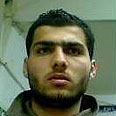
Muhammad abu Aadra, scion of a Hamas family, was apprehended in February 2012 when he attempted to cross the border into Israel from Sinai.
After spending time performing reconnaissance in Sinai, he had received instructions from Ra’ad Atar for abducting an Israeli. Atar, the Hamas military commander in Rafah, had already been responsible for many terrorist attacks, including the attack in which Gilad Schalit was abducted and other attacks in which Israelis were murdered.
The plan called for Aadra to help a terrorist cell infiltrate Eilat, where some of the terrorists were to commit suicide bombings and others were to abduct an Israeli. During the attack, Aadra was to shoot antiaircraft missiles and rockets at Israeli targets. In his confession, Aadra recalled being told by Atar that the other terrorists’ training for the attack had been completed, as had the terrorist infrastructure in Sinai for transporting them to the border with Israel.
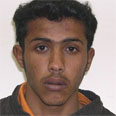
On 20 January 2012, thirteen terrorists attacked or helped attack IDF forces in the Am’ari refugee camp in Ramallah. The culprits were apprehended several weeks later.
Sa’ar Tzur, commander of the Binyamin Brigade, said that the attackers aimed to injure Israeli forces and then abduct one of them.
Members of the terrorist cell included Red Crescent workers Salah Baral and Umar abu Rayas (both 23), and Manzar Abbas, an officer in PA General Intelligence in Ramallah who was responsible for guarding the Red Crescent workers there. Abbas provided the weapons used in the attack.

During December 2011 and January 2012, security forces apprehended ten Islamic Jihad terrorists in the Jenin area.
With information gleaned from interrogating the terrorists, they also discovered the organization’s regional headquarters in Jenin, which had been in contact with Islamic Jihad headquarters in Syria and had been planning attacks against ISF soldiers, shooting attacks on Israeli communities in Judea and Samaria (the West Bank), and the abduction of a soldier for purposes of a prisoner exchange.
The members of the cell also were involved in rioting and producing explosives.

On 18 August 2011, terrorists crossed the border with Egypt and attacked Israel, murdering a soldier from the Golani Brigade and six civilians, and wounding four people. The IDF responded by striking the PRC in Gaza, which was behind the attack.
Some of the terrorists were equipped with tying equipment, including cable ties, to facilitate abducting one or more Israelis and smuggling them to Sinai.

In August 2011, the ISA and IPS exposed a cell of twenty terrorists in Judea and Samaria (the West Bank) who planned to open fire at an army jeep, abduct a soldier from it, and use him as a bargaining chip. Hamas terrorist Sabar Diab (30) and Ihab Sada (25), both from Kalkilya, were the leaders of the cell. Diab was at Ketziot Prison at the time the cell was exposed; Sada had been released from there at the beginning of 2011. The terrorists had prepared a location in Hevron to hide their victim.

In August 2011, Israeli security forces apprehended a terrorist cell in the Hevron area that was preparing to abduct a soldier and smuggle him to Gaza via Sinai. The cell received its instructions from Hamas in Gaza. The leader of the cell, Ahmed Madhun (44) of Hevron, had traveled to Saudi Arabia to receive $10,000 from Hamas for the purchase of munitions.
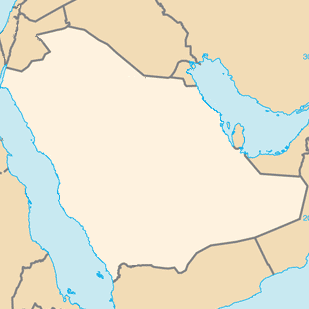
In July 2011, Hamza Mahmad Yusuf Othman (28), a Hamas terrorist from Jordan, was arrested during a visit to the Judea and Samaria area (the West Bank). In August he was charged by the prosecutor of the Central District with collaboration with Hamas with the goal of abducting and attacking Israeli targets. Specifically, Othman and his colleagues planned to attack the Israeli embassy in Amman and abduct an Israeli citizen from there, presumably a diplomat.

On 27 June 2011, a Bedouin resident of Lakiya (in the Negev) was apprehended by the police.
The man was suspected of breaking into the home of a judge in the south, transporting individuals present in the country illegally from place to place, and planning to abduct an IDF soldier from Be’er Sheva, among other charges.
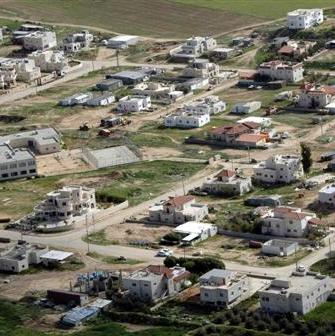
On 27 June 2011, it was cleared for publication that Israeli security forces had apprehended a network of PFLP terrorists planning to abduct a soldier from the Jerusalem area. The original terrorists already had recruited additional members and acquired pistols and silencers.
The leader of the cell, Nasser abu Hadir (50) of Shuafat, who had previously spent five years in prison, was the cell’s contact person with PFLP headquarters in Damascus. In February he had met in Jordan with senior PFLP terrorists, who provided money and training.
The terrorists also planned shooting attacks against Israelis as well as to murder individuals they suspected of collaborating with Israel.
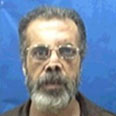
Hamas terrorists Ismail Labad (known as “abu Jafar,” 33); his brother Abdallah (both from the Shati refugee camp); and Muhammad al-Daya (of the Zeitoun neighborhood in Gaza) planned to abduct an Israeli soldier. They were eliminated and a fourth member of their cell was injured by an Israeli missile on 1 April 2011.
Those who were killed were supposed to leave shortly for Sinai, on their way to the planned abduction.
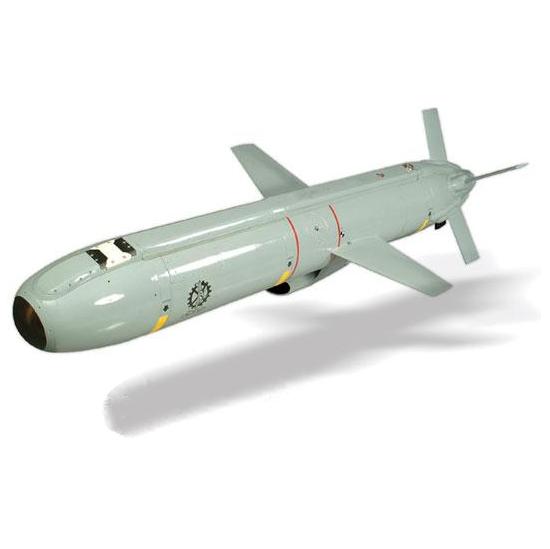
On 11 March 2011, Haaretz reported that over the past year, six cells planning to commit terrorist attacks had been arrested in Ramallah alone. Most belonged to Hamas. The terrorists had focused on abducting young Israelis driving or hitchhiking in Judea and Samaria (the West Bank).

In January 2011, security forces took custody of three Ramallah residents who planned to abduct an Israeli and use him as a bargaining chip for freeing terrorists. They intended to acquire an Israeli license plate and forged Israeli identification cards, buy land, build a structure there to hold their victim, and find terrorists able to cross the Green Line to assist them.
Hamas terrorist Imad Hamza Zahran (31), the leader of the cell, had been imprisoned previously for planning terrorist attacks, including an abduction, and returned to planning an abduction as soon as he was released from prison in December 2010.
The second terrorist, Nazam Shanina, had previously moved from Gaza to Ramallah in his capacity as a member of the PA security forces, and had previously been imprisoned for planning in 2006 to execute a shooting attack and abduction.
The third terrorist, PFLP terrorist Jihad al-Shami (34), had been imprisoned in 2008.
The terrorists met during their time in prison together.
The ISA said:
The cell’s activities again illustrate the enhanced motivation of the terrorist organizations in general and Hamas in particular to execute abduction attacks, including in these very days, for leverage toward freeing Palestinian prisoners.

On 20 December 2010, three Arabs attempted to stab a soldier near Giv’at Ze’ev. The soldier cocked his weapon, and the would-be assailants fled.
It is estimated that they intended to abduct the soldier.

In November 2010, security forces apprehended a Shechem- (Nablus-) based Hamas cell that was planning to abduct Israelis in Judea and Samaria (the West Bank) and commit suicide bombings in Jerusalem, inter alia.

The terrorists who murdered seven Beit Haggai residents traveling from Otniel to Bnei Na’im on Route 60 on 31 August 2010 did so with the intention to take their bodies and use them as bargaining chips, according to Egyptian newspaper al-Ahram. The murderers did not do so because another vehicle reached the scene after the murder, making it impractical to take the bodies.
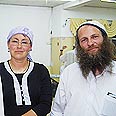
On 17 August 2010, the Israel Air Force destroyed a tunnel dug by terrorists from northern Gaza toward the direction of Kibbutz Be’eri. The tunnel was intended for use by terrorists to bypass the security fence and abduct an Israeli. Also destroyed in the IAF attack were a weapons manufacturing site and weapons smuggling tunnels.

Eyal Weitzman was on his way home from work in Itamar on 16 July 2010 when a car with Israeli license plates stopped for him at Yitzhar Junction. The driver, who was dressed as an Israeli and wearing a crocheted skullcap, offered him a ride, betraying a heavy Arab accent. The driver drove off; Weitzman called the police.

On 7 July 2010, a terrorist dressed as a yeshiva student waited for a ride at al-Sharqiya Junction (near Ma’aleh Levona). When a car stopped for him, he entered and sprayed tear gas at the driver’s eyes. She pulled herself together, turned off the car, exited, and moved to get her baby daughter from the back seat. On failing to turn on the car, the terrorist fled.

A terrorist cell from the village of Dir Samt planned to abduct an Israeli from the Etzyon Bloc area. One of the terrorists acquired skullcaps and a wig for this purpose. They were apprehended on 22 June 2010 after committing a separate attack in the southern Mount Hevron area, in which they murdered policeman Yehoshua “Shuki” Sofer.
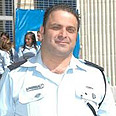
In December 2009, IDF forces in Gaza apprehended Hamas terrorist Salman abu Atiq and four others who attempted to cross into Israel. They had planned to abduct or murder a soldier and then use him or his body as a bargaining chip. The attack plan was prepared by Ra’ad Sa’ad, the military commander of Hamas in Gaza.
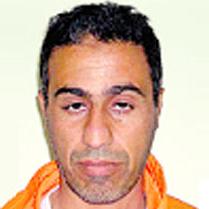
On 23 January 2010, Islamic Jihad terrorists attempted to abduct a soldier whose glider accidentally landed in the Gaza Strip. According to the terrorist organization, the attempt failed because of flooding in the boundary area.

In July 2009, Abd al-Rahman Talalqa, a resident of the Nuseirat refugee camp in Gaza, was charged with illegally entering Israel from Sinai and preparing to build a terrorist infrastructure for the execution of terrorist attacks in Israel. The terrorist’s handlers had trained him to use various weapons and to perform surveillance of military bases, police facilities, and other targets containing many people. According to the plan, the terrorist was to abduct a soldier, kill him, and bury him, with the aim of using the body’s location as a bargaining chip for freeing terrorists from Israeli prisons.
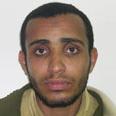
In July 2009, it was cleared for publication that two of the murderers of cab driver Gregory Rabinovitch had been apprehended. One, Muhammad Haldi, confessed during interrogation that they had planned after the murder to abduct a Jew to use as a bargaining chip in case one of the terrorists were arrested. He also confessed to planning additional terrorist attacks, including abducting or murdering a soldier.

At about 6:30 in the morning of 8 June 2009, some ten terrorists in Gaza drove trucks containing explosives-laden horses in the direction Kibbutz Nachal Oz, exited the trucks upon reaching the security fence, and began laying IED’s next to it. IDF Golani Brigade forces, tanks, and combat helicopters opened fire on them. Four terrorists, some of whom were wearing explosive belts, were killed in the ensuing crossfire, while the rest escaped under cover provided by mortar fire from within Gaza. Defense officials estimated that the terrorists had intended a major attack including the abduction of a soldier, and that this was averted due to the alertness of IDF forces in the field.

In April 2009 it was cleared for publication that security forces had apprehended seven terrorists planning imminent terrorist attacks, including the abduction of a soldier. Among the terrorists were Suhaib Kabha (20), Qutaib Kabha (21), Muhammad Kabha (20), and Ahmed Kabha (20), all from the village of Barta’ah (in Wadi Ara), and Abdallah Harubeh (19) of the village of Maghar. Two seventeen-year-olds also were apprehended.
The terrorists had been trained to abduct a soldier and to explode bombs with varying explosive power. A search of their homes revealed nine IED’s ready for use as well as computers containing incriminating information.
The Galilee Freedom Brigades terrorist organization claimed responsibility for the cell. Harubeh claimed to have set up the cell with guidance from Islamic Jihad terrorist abu Qassem.
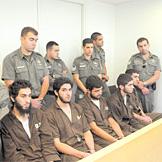
Suleiman Sawarkeh (24) was charged with attempting a suicide bombing or abduction at the beginning of March 2009, along with a terrorist from Gaza and another from Egypt. The members of the cell had been trained to stealthily cross the Israeli border and choose targets for terrorist attacks, such as busy places and military installations. They were intended to bring a suicide terrorist to his target in Israel after crossing the border. Alternately, they planned to abduct a soldier and transfer him to Gaza via Sinai.

In Gaza during Operation Cast Lead (December 2008 – January 2009), IDF forces encountered houses that Hamas terrorists had booby-trapped. In some cases, the booby traps were set up so that IDF forces would be injured immediately upon entering the homes and Hamas terrorists would then be able to abduct them, escaping through tunnels leading out of the houses.

Eyad A’abid (20) and Abdallah A’abid (21) of Issawiya were charged on 14 December 2008 with conspiracy to abduct IDF soldiers. They intended to use the soldiers as bargaining chips for freeing terrorists from their family who had been imprisoned for involvement in murders.
The two planned to crash a tractor into an army jeep that was regularly stationed in their neighborhood and then abduct soldiers from the jeep. In preparation for the attack, they had purchased two knives, two clubs, two masks, gloves, and an electric shocker, inter alia, and had asked a relative who worked in the PA security apparatus to sell them an M16.
The two were also charged with additional crimes.

On 4 November 2008, Israeli forces at the Gaza security fence uncovered a tunnel, which had been dug in order to allow Hamas terrorists to enter Israel and abduct soldiers. The tunnel was found with information provided in the confession of a terrorist who was arrested after failing to execute a suicide attack.

On 3 November 2008, while security forces were demolishing structures in Migron (in the Binyamin region), a group of Arabs attacked a group of Jewish youths who were in the area, coming nearer as they threw rocks and stones at the Jews. When the terrorists were close enough, they stabbed one Jewish youth in the head and bound two of the others, and then began trying to drag them away. The terrorist attack was foiled by other youths who took notice and hurried over.
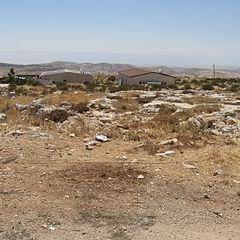
In November 2008, when Yigal R. (67) parked his truck in Kfar Saba and exited it, a car carrying three Arabs suddenly pulled up and blocked his way. They got out of the car and attacked him, yelling, “if you don’t get in the car, you’re going to die! Yigal fought back and screamed. Fearing that passersby would hear his screams, the would-be abductors left the scene and escaped.

It was cleared for publication in October 2008 that the ISA had apprehended a Palestinian youth who had planned to abduct a soldier via a tunnel. The terrorist confessed during his interrogation that he had intended to entice soldiers with offers of a drug deal, then drug them with sleeping pills and bring them to Gaza via Egypt, where a Hamas terrorist who had provided him with assistance would be waiting.
As a news commentator said, “this could have been a repeat of the Gilad Schalit abduction.”

On 22 May 2008, a number of Palestinian terrorists attacked Erez Crossing, adjacent to the Gaza Strip. One terrorist drove a truck bomb containing four tons of explosives, which he was to detonate where it would murder as many Israeli soldiers as possible. A jeep without explosives traveled behind the truck. The terrorists in the jeep apparently were intended to abduct soldiers when the truck exploded and the Israeli forces were distracted.
IDF forces foiled the attack. Islamic Jihad and Fatah’s Aqsa Martyrs Brigades claimed responsibility.

On 19 April 2008, Hamas executed a multipronged terrorist attack at Kerem Shalom Crossing, adjacent to Gaza, wounding 13 soldiers.
The attack began with three vehicles driving toward the security fence. The first vehicle exploded upon reaching the fence, thus breaching it. The second vehicle drove through the fence to the Israeli side and exploded when it came close to Israeli soldiers. The third vehicle entered after the second, with Hamas terrorists exiting and opening fire on the soldiers in order to murder several and abduct others.

On 9 April 2008, a group of terrorists infiltrated the fuel terminal at Nachal Oz, adjacent to Gaza, and murdered two truck drivers who worked there. According to IDF estimates, the terrorists intended to abduct an Israeli or to infiltrate Nachal Oz and stage an attack there.

In March 2008 in Daliyat el-Carmel, several Arabs in a car stopped by a Druze soldier named Akram and asked him for directions. Akram noticed their strange accent, understood that something was not right, and distanced himself from the vehicle. The terrorists immediately left the car and chased him in order to get him into the car, but he managed to escape and went to a police station to file a complaint.
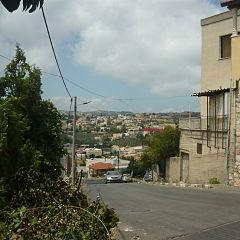
In February 2008, Defense Minister Ehud Barak confirmed that Israel had foiled two attempts by Hizballah to abduct Israeli businessmen traveling abroad.

On 6 September 2007, Israeli security forces captured a truck and car in the Kissufim area. The terrorists traveling in the car had intended to capture the nearby IDF position, abduct a soldier from there, and transfer him to Gaza. The terrorist cell included Islamic Jihad members as well as members of Fatah’s Aqsa Martyrs Brigades.
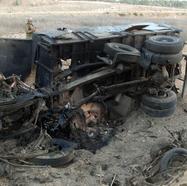
On 29 July 2007, three Arabs from Jerusalem shoved a 14-year-old youth into the car in which they were traveling. They sped away toward the exit from the city, but the boy managed to escape.

In June 2007, an Islamic Jihad spokesman acknowledged that terrorists belonging to his organization had attempted and failed to abduct a soldier in the area of Kissufim Junction. They used the same tactic used in the abduction of Gilad Schalit, firing on soldiers in order to provide cover for the abduction. The terrorists traveled in a vehicle marked “TV” in order to mislead the soldiers.

On 24 April 2007, Israeli security forces foiled an attempt by Hamas to abduct a soldier. Terrorists in Gaza had fired great quantities of rockets and mortars at Israeli forces during the day in order to divert their attention, so as to let terrorists cross the Green Line unnoticed and abduct a soldier.
During the preceding weeks, Hamas terrorists had repeatedly threatened through the media that they would abduct more Israelis if there were no breakthrough in negotiations for the release of Gilad Schalit. They also had noted that the military wing of Hamas had begun training for such an abduction.
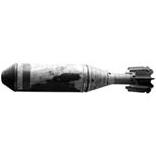
In March 2007, the police and ISA arrested two Arab residents of Jerusalem for planning to abduct and murder an Israeli.
The terrorists, Ayman Salhab Maras Al-Amud and his cousin Haitham Salhab Mashuafat, intended to offer a hitchhike to a Haredi Jew, since Haredim are easy to identify as Jewish, then beat him and use a screwdriver to stab him. When no one accepted a hitchhike from them, they obtained a pistol in order to force a Jew into their car, but they were arrested before they could put this plan into action.

On 4 Februay 2007, three Palestinians drove to Tapuach Junction and offered a ride to a waiting Israeli. When he declined, they apparently drove to Eli Junction. There, the Arab accent of an individual in a car aroused the suspicions of a hitchhiker who had considered accepting a ride. He returned to the hitchhiking point, and they chased after him in an attempt to force him into the car. After escaping, he contacted the police. In the end the culprits were captured by Border Police forces, who found a significant quantity of weapons in the car.
One of the terrorists, Hamas operative Assam Barghouti, had been released from prison under one year prior, after serving a sentence of only 1.5 years. The practical preparations for an abduction had begun immediately after the release of another member of the cell, who resumed committing terrorist attacks within weeks of being released from prison for the second time.
Haaretz (Hebrew) reported:
The delay in making a deal to release abducted soldier Corporal Gilad Schalit in exchange for hundreds of Palestinian prisoners is increasing the pressure on the [terrorist] organizations to perform additional abductions, with the hope that these will break new ground … In most abductions in the West Bank during the last several years, abductors have preferred to immediately murder the hostages, assuming that it will be easier to hide a body and negotiate over it than to hold a live hostage without his being located by the Israeli security forces.
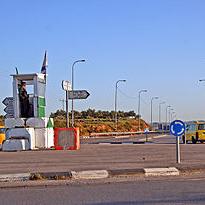
In July 2006, a soldier was standing at the hitchhiking point by IDF Training Base 1 in the Negev, waiting for a bus. An Arab driver pulled up, exited his car, stabbed the soldier, and attempted to force her into the vehicle. She managed to run away and he was ultimately caught.
At the time the IDF had received a number of warnings about plans to abduct soldiers from that base, due to its proximity to the Egyptian border.
